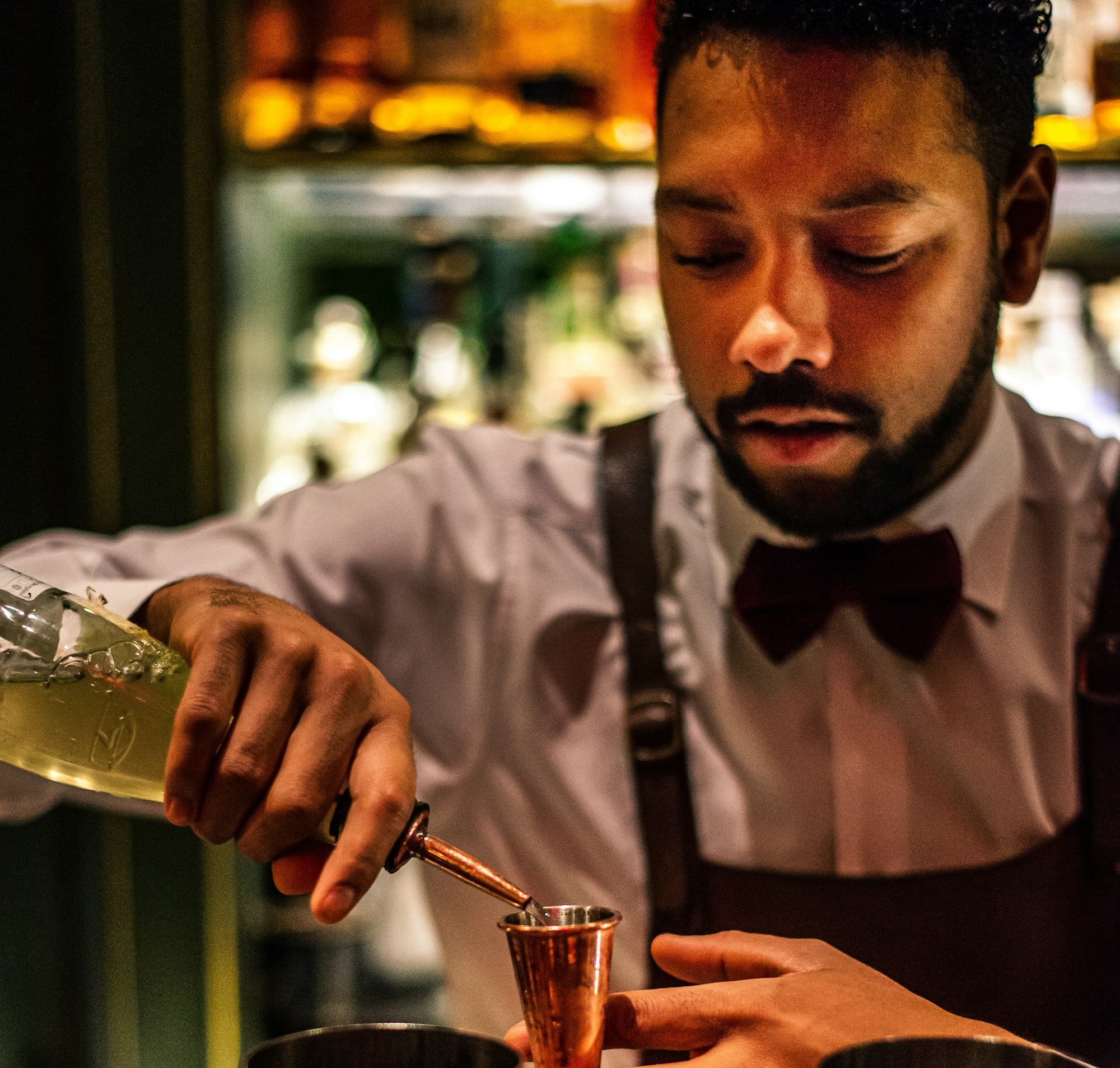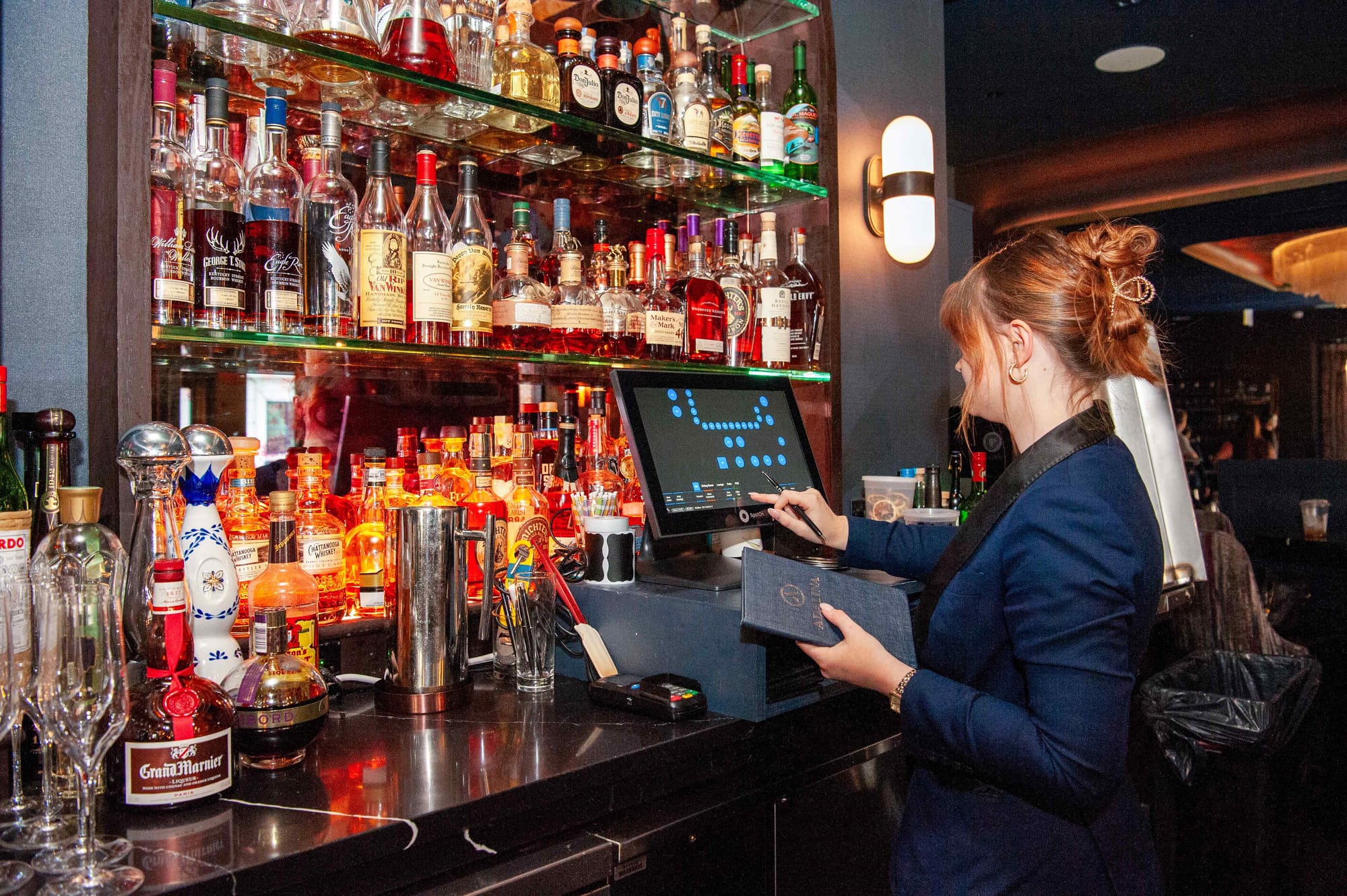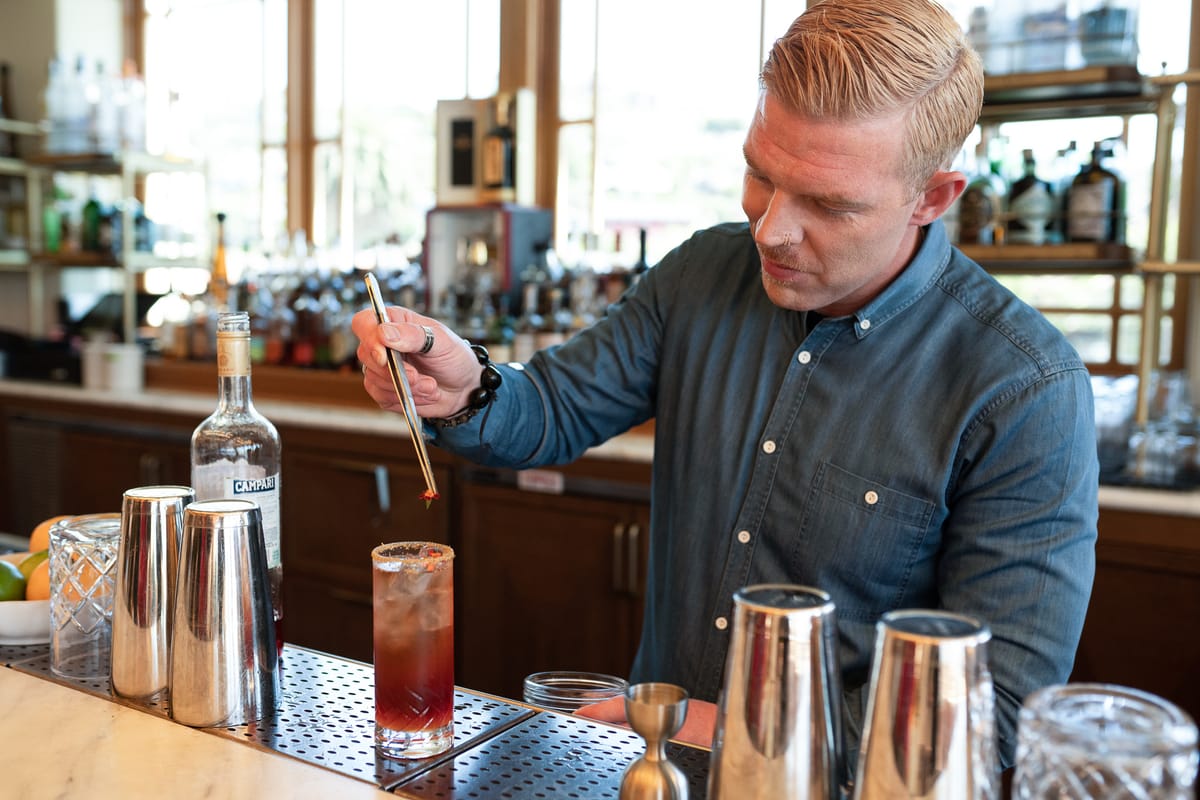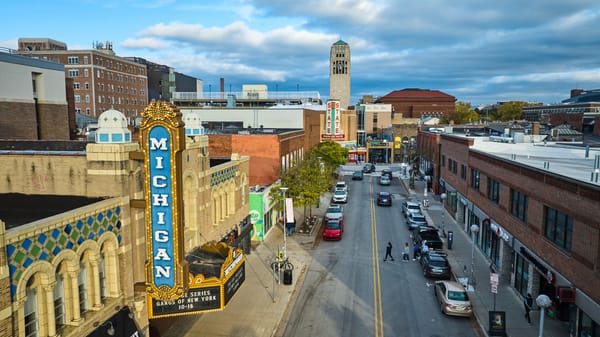In this article:
- What does a bartender actually do?
- The pros and cones of bartending
- Should you go to bartending school?
- Steps to becoming a bartender
- FAQs about becoming a bartender
I think that everyone, at some point, has romanticized the idea of becoming a bartender.
The money is good, the hours are flexible, you meet a lot of interesting people—and if we’re being honest, you’re getting to live a little bit of the rock n’ roll lifestyle.
But behind the stick (industry slang for the bar), it’s not all free shots and big tips.
Bartending takes serious hustle, grit, and a specific set of skills that go beyond knowing the correct way to make an Old Fashioned.
If you’re serious about getting into the industry—whether you’ve never worked in a bar before or you’re trying to make the leap from server to bartender—this guide will show you step-by-step how to land a job slinging drinks.
How do I know it’ll work?
Because these are the same steps I took to become a bartender in under six months without any formal training or prior bartending experience.
If it worked for me, it can work for you.
In this article, you will learn:
- What bartenders really do day-to-day (and what skills matter most)
- Whether bartending school is worth your time or money
- A practical, six-step roadmap to landing your first bartending job
Let’s start with what the job actually looks like behind the bar.
What does a bartender actually do?

To anyone enjoying a few drinks at a bar top, bartending appears to consist of mixing and pouring drinks and talking to customers.
Because of this common perception, we’re going to break our list into two parts:
- Tasks customers see
- Tasks customers don’t see
I want to do it this way to pull back the curtain on just how much work goes into the appearance that someone is casually hanging out, making drinks.
1. Tasks customers see
You’ll know most of these are already, from spending time in bars and going out, but let’s make sure everyone is up to speed.
Guest-facing responsibilities include:
- Greeting and interacting with guests
- Taking drink (and sometimes food) orders
- Mixing and serving drinks
- Checking IDs
- Making conversation and providing recommendations
- Handling payments and returning change
- Managing tabs and closing out checks
- Upselling specials or featured cocktails
- Cutting someone off if they’ve had too much
2. Tasks customers don’t see
These are the behind-the-scenes tasks that keep everything running smoothly:
- Stocking liquor, beer, wine, mixers, and garnishes
- Prepping garnishes (slicing citrus, making syrups, squeezing juices, etc.)
- Tapping kegs and changing CO2 tanks
- Cleaning glassware, bar tools, and the bar itself
- Refilling ice wells, napkins, straws, and other supplies
- Organizing the back bar and storage areas
- Taking inventory and restocking after shifts
- Balancing the till and handling cash drops
- Communicating with servers and kitchen staff
- Opening and closing the bar (setup and shutdown procedures)
Bartenders who can manage all of these responsibilities well do so because they are masters of multitasking.
You’ll need to memorize dozens of cocktails, beer and wine lists, happy hour rules, and, more often than not, entire food menus.
You’ll need to maintain a level head when people drink too much, remember who ordered what, and somehow keep a smile on your face when the pressure to perform feels like too much, and it’s three people deep across the entire bar top.
But the job isn’t just about muscle memory; it’s about reading the room and having sharp people and social skills.
Great bartenders know how to make people feel welcome, even when there’s a thirty-minute wait to get inside. You’re part host, part therapist, part coordinator, and part showrunner for the night.
And your role can shift depending on where you work.
If you work at a dive bar, you’ll be pouring beers and well drinks.
If it’s a nightclub, everything is about speed and volume.
At a cocktail bar, the focus is on precision, balance, and deep understanding of spirits.
Each type of bar will teach you something different, but the core responsibilities of your job listed above will stay the same.
The pros and cons of bartending

The highs of bartending are seriously rewarding, but the lows can hit just as hard when they swing the other way, making it a job of extremes.
For every rush of a packed, high-tipping night, there’s an equally exhausting shift with difficult customers and blown kegs that keep the scales balanced.
Before diving headfirst into the job, you should know what to expect.
The pros:
Everyone knows the pros of bartending already; it’s what makes it such an alluring position, but let’s cover them anyway:
- The money can be great: A busy night behind the bar can earn more than what you’d make working three or four days at an office job.
- Flexible schedule: Most bar jobs are accommodating to working around school, side gigs, or other creative pursuits.
- Social, fast-paced: It’s a high-energy social environment where you can meet a lot of people—every shift is a chance to connect.
- Build useful life skills: Bartending gives you valuable soft skills, like knowing how to multitask under pressure, handling conflict, and reading people, that will serve you well long after you stop bartending.
- Creative outlet (at some bars): Craft cocktail bars let you experiment with flavors and presentation—it's a chance to express yourself and even build your own signature drinks.
- Low barrier to entry: You don’t need a degree or expensive training to start—just a good attitude and strong work ethic.
The cons:
Like all jobs, serving people alcoholic beverages night after night has its downsides.
Including:
- It’s physically demanding: Between lifting kegs (a full keg is 160 lbs), shaking drinks, and constantly being on your feet, the job can wear your body down if you're not taking care of yourself.
- Late nights & long shifts: Most bartending shifts go well past midnight, and you’ll often be on your feet for 8 to 10 hours straight, sometimes more.
- Inconsistent income: Tips are great, but you're at the mercy of things you can’t control, like weather, holidays, or how consistently busy the bar is.
- Dealing with drunk people: Not every guest is a joy to serve. Some will test your patience, ignore boundaries, or need to be cut off, which can be mentally draining.
- It’s a young person's game: You don’t see many old bartenders because of the reasons listed above. You need a long-term plan, or the late nights and constant stimulation will take a toll on you mentally and physically after several years.
Bartending is a wild ride that can be extremely lucrative and will come with many crazy stories, but like all professions, it comes at a cost.
To me, the tough shifts and long nights are 100% worth it if you’re smart with your money and have a long-term plan.
If the pros and cons haven’t deterred you, and you’re ready to gain experience and develop your bartending skills, the first question you’re probably asking is: Should you go to bartending school?
Should you go to bartending school or take an online course

The short answer is no—you don’t need to attend bartending school or take an online course to get a job placement behind the bar.
That might surprise some of you, but the reality is that what you learn in bartending school, you can learn on the job and get paid to learn how to bartend instead of the other way around.
The reality is that most bar managers don’t care if you went to school—they care significantly more about attitude, work ethic, and the ability to quickly develop your skills.
That’s not to say that taking a bartending class is entirely useless. It can help some people build confidence, especially if you’ve never worked in the restaurant industry before or are nervous about mixing drinks.
If you need to dip a toe in and learn some bartending basics, it serves a purpose, but it can’t teach you the soft skills required to handle a rush, clearly communicate with the rest of staff, and serve alcohol to large numbers of people responsibly.
Online courses will teach you drink recipes and terminology, but they won’t prepare you for real-world bar work.
If the idea of going to school still sounds appealing, ask yourself this: Would you rather spend hundreds on bartending classes or apply to a local bar, learn on the job, and get paid to learn rather than paying to learn?
Most experienced bartenders (present company included) will tell you the same thing: skip the class and head straight for the floor.
Now, let’s dive into the six steps to becoming a bartender.
Step 1: Assess your starting point
Before doing anything else, evaluate where you’re starting from. This will determine your next move in becoming a new bartender.
Have you ever worked in the restaurant industry?
Are you a server, host, or busser looking to advance?
Are you a cook looking to move to front of house?
If you’re a total beginner with no restaurant industry experience, your best bet is to try to secure your first job in a supporting role.
I’m talking entry-level positions like:
- Host
- Busser
- Dishwasher
You’re probably scratching your head on a position like a dishwasher, but you have to remember this first step is about getting started.
Washing dishes is a great way to learn the rhythm and flow of a restaurant, industry language, and how to handle high volumes of work.
The core skills of a dishwasher transfer directly to being a bartender. After that, you can move to a busser, then a server, and keep climbing the ladder.
If you’ve worked in restaurants before, you’re already ahead of the game.
You’ve got relevant skills, and you’ve probably already learned many of the foundational abilities necessary to bartend, like how to manage a high-volume service, engage with customers, and multitask under pressure.
For example, before becoming a bartender, I was a cook/chef for many years, but I got tired of the work and wanted to try something new (plus make way more money in tips).
Working the line gave me the advantage of already knowing how restaurants work—if you have similar experiences, lean on them and use what you know.
Step 2: Learn the basics on your own

Don’t wait for someone to hand you a job to start learning. The more initiative you show up front, the more seriously a hiring manager will take you.
My first front-of-house gig was as a barback (more on this position later), but that wasn’t my end goal.
I wanted to become a bartender as quickly as possible and knew that if I waited for someone to offer me the position, it would take forever, so I had to be proactive about building my basic knowledge of bartending.
The first thing I did was read bartending books. And I mean good bartending books that show you how to make drinks the correct way.
I suggest buying or seeing if your local library has these bar books:
- The Bar Book by Jeffery Morganthaler
- Cocktail Codex: Fundamentals, Formulas, Evolution by Day, Kaplan, and Fauchald
- The PDT Cocktail Book by Jim Meehan
- The Dead Rabbit Drink Manual by Sean Muldoon
- Speakeasy - The Employees Only Guide to Classic Cocktails
There are many more books to list, but these had a significant impact on me, and the bartenders who trained me knew them all very well.
You can also watch YouTube videos and follow well-known bartenders on social media, giving tips and advice on how to tend bar like a pro.
Familiarize yourself with the tools of the trade, learn how they work and why they’re important.
For example, why you should always use a jigger when building cocktails or when to stir a drink in a glass beaker versus mixing drinks in a tin shaker.
A good bartender knows the difference.
You don’t need to memorize a hundred different drinks, but learn enough to be confident when you walk into your first shift or when you interview for a position.
Step 3: Make sure you’re legal to pour drinks
Before you start applying anywhere, make sure you can legally serve alcohol in your state.
“Do you have your alcohol serving permit or bartender's license?” is a standard interview question, and you want your answer to be yes.
Every state has different laws, but most require you to have some kind of responsible alcohol service training, like TIPS certification or ServSafe Alcohol.
These programs teach you how to serve alcoholic beverages responsibly, spot fake IDs, and handle intoxicated customers—all stuff you’ll deal with on the job.
This is one of the easiest steps in the process, but don’t skip it. Having the right certification shows you’re serious, and it means you’ll be ready to serve alcohol legally on day one.
Step 4: Get your foot in the door (even without experience)
We touched on this a little bit up top, but let’s look at exactly how to get your foot in the door so you can begin working toward your goal.
The first thing you’ll need is a strong resume.
I’ve seen a lot of people exaggerate their resumes to get a bartending job, and it never works out well.
Bartending is not something you can fake, so when you create your resume, keep it simple and honest.
Highlight any relative abilities you have:
- Reliable
- Great communication skills
- Punctual (this is big)
- Cool under pressure
- Personable
- Fun to be around
You get the idea. Even if you don’t have bar experience, you want to communicate you have the foundational skills that make you a good fit.
Once you have your resume, you’ll want to apply for supporting roles like host, busser, or barback.
Thees jobs teach you how a bar runs in real-time, and it gives you the opportunity to show management that you’re a hard-working, reliable person.
The role I encourage you to apply for the most is being a barback.
This position is designed to prepare you for a career in bartending.
Think of a barback as an assistant bartender:
- Stocking
- Cleaning
- Prepping garnishes
- Changing kegs
- Getting anything the bartender needs
You’re directly supporting the person who holds the job you want and it’s the fastest way to get into a bartending position.
Most bartenders are cool and will teach you how to make drinks if you ask them, which is exactly what I did.
I’d set the bar up as quickly as I could, then during the slow time before the rush, I’d ask the bartender if I could make all the drinks and pour beer and wine till the crowds showed up.
It is the fastest way to learn how to bartend.
Once I was competent enough to handle a larger volume, I approached the beverage director about applying for the next open position. He watched me work in the bar for a while and said I looked ready to be a bartender.
Three weeks later, a bartender quit, and I got the job.
When you apply, be polite, confident, and upfront about your goals. Say you’re looking to learn, grow, and earn your place behind the bar.
Managers like it when you show up in person so you can shake their hand and look them in the eye. It’s an easy way to stand out in our digital-centric society.
If you don’t hear anything, follow up a few days later till you get either a yes or no.
Step 5: Treat every trial shift like an audition

Ok—you have your resume, your permit to serve alcohol, and the interview went great.
The next step is working a trial shift, what’s known in the restaurant industry as a stage. It’s pronounced 'stahj' and rhymes with 'massage.'
Treat every stage like an audition because that’s exactly what it is.
You’ll be watched for how you move, how you listen, how well you work under pressure, and how you treat customers and coworkers.
Don’t worry about impressing anyone with bartending knowledge or how many drink recipes you’ve memorized.
Your job is to focus on the basics:
- Show up early (at least 5-10 minutes)
- Stay engaged
- Be ready to hustle
- Be proactive
- Ask great questions
If something needs to be wiped down, do it.
Refill the ice well before they ask.
If you need to ask where something goes or where something is, remember it for next time.
Managers don’t expect you to know everything, but what they do want is someone who pays attention, stays calm under pressure, and blends in with the team.
These are the traits management is looking for in a new bartender.
I was once told by a bar owner, “You can’t teach hustle.”
It means that knowing how to work hard is something you figure out on your own, so if you show up ready to work and prove yourself, you’ll more than likely get the job.
If you don’t get the job, ask them what you can do to improve, say thank you, and move on to the next stage.
You’ll land one soon.
Step 6: Keep leveling up once you're in

You did it! You landed your first bartending job, but learning how to become a good bartender is just the beginning.
The key is to continually hone your craft.
You’ll be trained, of course, but even after training, watch other bartenders closely.
They should have a good economy of movement, a smooth style of handling customers, and a tough mentality you can adopt when it gets busy behind the bar.
Take mental notes and write them down when you get home.
Learn your bar’s signature cocktails, then study more drink recipes, like the classics, to expand your repertoire.
Practice making popular drinks until they feel automatic. The more repetition you get, the more your skill level—and confidence—will grow.
You’ll also need to learn the tech tools. Knowing how to efficiently operate the bar POS, like starting tabs, using speed screens, handling split payments, and correcting mistakes without slowing down, makes you significantly more valuable to the team.
If your bar uses handhelds for tableside service or QR ordering on the patio, take the time to really understand how they work.
Every second you save by mastering these tools, you can spend connecting with customers and making drinks, which translates directly to bigger tips.
Repetition legitimizes, meaning the more alcoholic beverages you make, the better you’ll get.
Don’t fall into the trap of thinking you’ve “made it” just because you got the role. The best professional bartenders remain curious and continually learn.
When you hit a wall or start to feel stuck, that’s your sign to ask for feedback, try new techniques, or even move on to a different local bar to expand your experience.
Frequently Asked Questions about how to become a bartender
Looking for some quick answers to questions about how to become a bartender? Here are a few frequently asked questions.
1. Can I become a bartender with no experience?
Yes! Plenty of professional bartenders started out with zero experience. The key is to start in a supporting role, like a barback, so you can gain experience, learn the flow of service, and prove yourself.
2. How long does it take to get hired as a bartender?
It depends on your starting point. If you already work in the restaurant industry, the jump can happen fast, sometimes in a matter of weeks.
If you’re brand new, expect to spend several months learning the ropes and building relevant skills before stepping behind the bar.
3. What’s the average salary for bartenders?
A bartender’s salary varies depending on the type of bar, location, and how busy it is. Most bartenders earn minimum wage plus tips, with the tips making up the bulk of their income.
A skilled bartender at a busy bar can make over six figures a year.
4. Do I need to be 21 to bartend?
Not always. Some states allow you to serve alcohol at 18, while others require you to be 21. You’ll need to check your state’s laws, and even then, individual bars may have their own age requirements.
5. What’s the difference between a barback and a bartender?
A barback supports the bartender by restocking, cleaning, and keeping things organized during service. They don’t usually serve drinks, but it’s one of the best entry-level positions if you’re learning how to become a bartender.
Put in the work, ask questions, and you’ll move up fast
After working in the restaurant industry for over 25 years, I can confidently say that finding solid, reliable employees is challenging.
If you can demonstrate you’re a reliable, hard-working person with a great attitude and you’re upfront about your goal to become a bartender, management will recognize your effort and reward you with the position.
Meet the author
Wade Nelson has 25+ years in the restaurant industry, working both front and back of house, including as a bartender.












